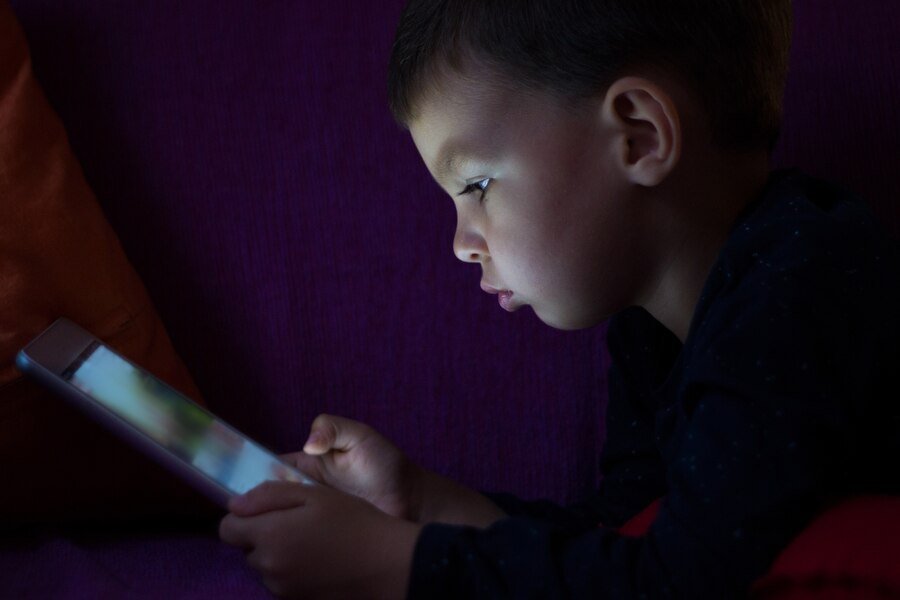
Does Your Child Have Addiction to Screens? 5 Signs and Solutions

In today’s digital age, screens are everywhere. From smartphones and tablets to televisions and gaming consoles, our children are growing up surrounded by technology. While screens can be educational and entertaining, too much screen time can lead to addiction to screens, impacting a child’s physical health, mental well-being, and social development.
As a parent, you may wonder: Is my child addicted to screens? You’re not alone in this concern. Many parents struggle with managing their child’s screen time, especially when tantrums and arguments arise over devices.
In this article, we’ll discuss five major signs of addiction to screens and provide practical, step-by-step solutions to help your child develop a healthier relationship with technology.
Let’s begin by understanding what addiction to screens actually means.
What Is Addiction to Screens?
Addiction to screens refers to an excessive reliance on digital devices that interferes with daily life, social interactions, responsibilities, and overall well-being. It’s not just about watching a lot of YouTube videos or playing video games frequently—it becomes a concern when screen use starts replacing essential activities like sleep, exercise, and face-to-face interactions.
Children with addiction to screens may struggle with self-control, exhibit mood swings when screen time is limited, and have difficulty focusing on offline activities.
Is My Child Just a Screen Enthusiast or Addicted?
It’s normal for children to enjoy digital devices. However, addiction to screens occurs when screen time dominates their life and they struggle to function without it.
Here are five warning signs to watch for:
5 Signs Your Child Has an Addiction to Screens
1. Constant Craving for Screens
Does your child ask for more screen time even after they’ve already spent hours on their device? Do they get restless or irritable when screens are taken away? If your child constantly seeks out screens, this could be a sign of addiction to screens.
📌 What to Do:
- Set Clear Boundaries: Use parental control apps to enforce daily screen limits.
- Create a Daily Schedule: Allocate time for non-screen activities like playing outdoors or reading.
- Use a Reward System: Reward screen-free behavior with engaging activities, such as a family outing.
2. Ignoring Responsibilities
A child struggling with addiction to screens may start neglecting their homework, chores, or even basic self-care like brushing their teeth. If your child consistently prioritizes screen time over responsibilities, it’s a red flag.
📌 What to Do:
- Implement a “Screens After Tasks” Rule: Make it clear that screens are a privilege earned after completing homework and chores.
- Use Visual Reminders: Post a checklist on the fridge or wall to reinforce daily responsibilities.
- Lead by Example: Show your child that responsibilities come first by managing your own screen use.
3. Social Withdrawal
Is your child avoiding family time or playdates with friends because they’d rather be on their device? Excessive screen use can lead to social isolation, making children less interested in real-world interactions.
📌 What to Do:
- Plan Social Activities: Encourage participation in team sports, art classes, or playdates.
- Limit Solo Screen Use: Set rules where screens are only allowed in shared spaces rather than bedrooms.
- Encourage Face-to-Face Conversations: Have daily family discussions without devices.
4. Mood Swings and Irritability
One of the biggest warning signs of addiction to screens is emotional dependence on devices. If your child gets extremely frustrated, anxious, or even aggressive when screen time is restricted, it’s time to reassess their digital habits.
📌 What to Do:
- Introduce Gradual Limits: Reduce screen time slowly instead of removing it all at once.
- Teach Emotional Coping Skills: Help your child manage frustration through deep breathing or physical activity.
- Stay Firm on Boundaries: Be consistent with rules even if your child protests.
5. Lack of Interest in Physical Activity
Children with addiction to screens often prefer sitting indoors with their devices rather than engaging in outdoor play. This can lead to health issues such as poor posture, eye strain, and obesity.
📌 What to Do:
- Make Outdoor Play Exciting: Organize fun activities like treasure hunts or nature walks.
- Set a Good Example: Reduce your own screen time and engage in physical activities together.
- Encourage Active Screen Time: Opt for interactive games that promote movement, such as dance or fitness apps.

Practical Solutions to Reduce Your Kids’ Addiction to Screens
Now that we’ve covered the signs of addiction to screens, let’s explore effective ways to help your child develop a healthier relationship with technology.
1. Set a Family Screen Time Policy
Create a family agreement that includes:
✅ Screen-free zones (e.g., bedrooms, dinner table).
✅ Screen-free hours (e.g., before school and bedtime).
✅ Daily time limits for entertainment-based screen use.
2. Encourage Alternative Activities
Kids turn to screens when they’re bored. Help them explore non-digital hobbies, such as:
🎨 Drawing or painting
📖 Reading books
🏀 Playing sports
🎼 Learning a musical instrument
3. Use the “20-20-20 Rule” to Reduce Eye Strain
The 20-20-20 rule helps prevent eye strain and screen fatigue. Teach your child to:
🔹 Look away from the screen every 20 minutes
🔹 Focus on something 20 feet away
🔹 Take a break for 20 seconds
4. Create a Reward System for Screen-Free Time
Children respond well to incentives. Set up a reward system where they earn points for screen-free activities, which can be exchanged for fun non-digital rewards like a family picnic or a new book.
5. Be a Role Model
Your child will follow your habits. If they see you constantly glued to a screen, they’ll do the same. Reduce your own screen time and engage in real-world activities to set a positive example.
When Should You Seek Professional Help?
If your child’s addiction to screens is severely impacting their emotional health, sleep, school performance, or relationships, consider consulting:
👨⚕️ A pediatrician for professional guidance.
🧠 A child psychologist specializing in screen addiction.
📚 A counselor to help develop better coping strategies.
Early intervention can prevent long-term issues and help your child develop a healthier relationship with technology.
Final Thoughts
Screens are an unavoidable part of modern life, but addiction to screens can negatively impact your child’s well-being. Recognizing the signs early and implementing healthy habits can make a huge difference.
By setting boundaries, offering engaging alternatives, and leading by example, you can help your child enjoy technology without becoming dependent on it.
Remember, change takes time. Be patient, consistent, and supportive, and you’ll see progress.
You’re not alone in this journey—many parents face the same challenge. With love and guidance, your child can develop a balanced, healthy relationship with screens.
Read our latest article: Gentle Parenting vs. Traditional Discipline